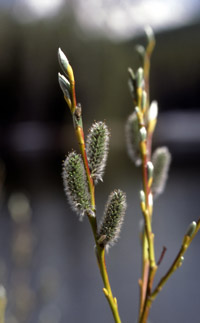A paper in the September issue of Ecological Applications says that when previously stunted willow trees near rivers in Yellowstone National Park started to grow, the diversity of songbird species found within the willow stands increased.
The study grouped the willow stands into three types: suppressed (likely by over-browsing and -grazing by elk and bison), released (where the willows had begun to grow), and previously tall. The “released” and “previously tall” willow stands had similar range in vegetation heights, but were not distributed over the landscape in the same way.
Because the diversity of songbird species in both the released and previously tall willow stands were similar, the researchers concluded the vertical complexity was more important to supporting that diversity than horizontal complexity.
The study has implication for other places where tree growth has been stunted by over-browsing by deer, moose, elk, or other animals.
The study does not address the reason why the willows started to grow (“…a possible consequence of wolf [Canis lupus] restoration, climate change, or other factors.”), so no help there. But if you need more data on the connection between tree height and songbird diversity, you can get it in this paper.
Abstract and access to the article through subscription or fee, here on the Ecological Applications site.
A free look at the paper on a researcher’s Web site, here.
Photo: Willow catkins in Yellowstone National Park, J. Schmidt, courtesy of National Park Service.

